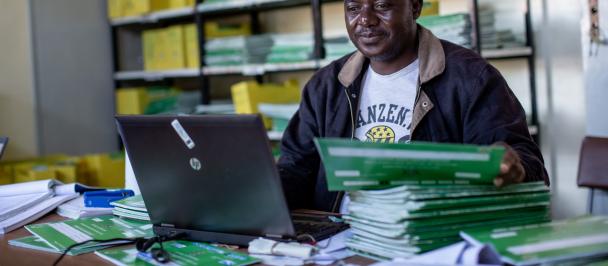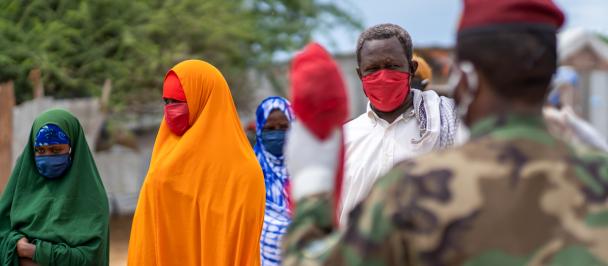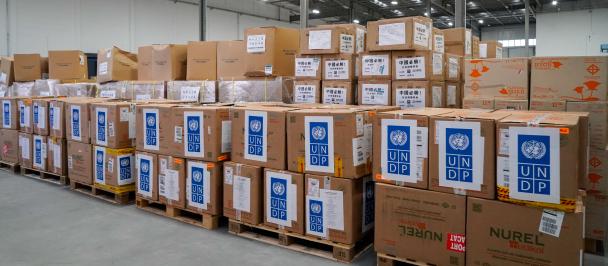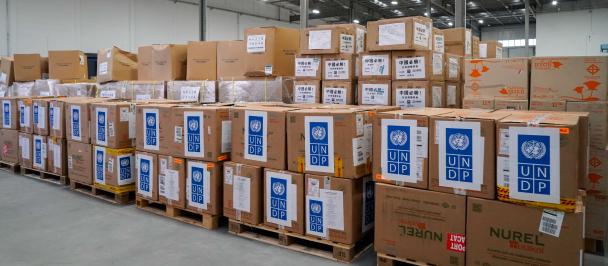With more than 36 million confirmed cases and more than a million deaths, over 250 million people in need of humanitarian assistance, COVID-19 is the greatest global crisis since World War Two. Many countries are deep in the first wave and some are battling the second. The staggering rate of infections and severity of cases continues to amplify health vulnerabilities in many countries. The Global Health Security Index assessed the readiness of 195 countries to manage outbreaks, looking at prevention, detection, response, health services, and policy. Out of a potential 100 points across these areas, rich nations scored just over 50, the average across all was 40 and least developed countries, scored just 29, with very worrying gaps across many critical outbreak functions. The world was simply not prepared for this.
Evidence shows the impact in business continuity, employment, gender inequality, economic reversals, pressure on public services, food insecurity, rising poverty, mental health deteriorating and a profoundly negative impact on human development. This is very worrying to UNDP, our partner countries and many others, and must force us to consider the long-term implications.
So, what is the evidence we have of the scale and severity of such secondary impacts from COVID-19?
Both predictions and actuality are equally dire. Global economic activity is set to shrink as much as 7.6 percent, while the most positive predication of global impact on tourism are losses of US$1.17 trillion, equivalent to 1.5 percent of world GDP, with many developing countries in serious financial straits. Unemployment has skyrocketed in many countries. Just over five percent of the world’s entire working hours were lost in the first quarter of 2020, equivalent to 155 million full time jobs lost, expected to be 400 million lost in the second quarter. The impact on critical public services such as healthcare, education, social services, and transportation has been huge and is likely to grow. Increased emergency demand, pressure to switch to virtual services, and an incredibly challenging workforce management environment have put public services under huge pressure.
All of this has placed great strain on households. Over the past months, an additional 6.7 million children are suffering from malnutrition, as households struggle to provide basic nutrition, and there is grave concern that the economic downtown accompanying COVID-19 will drastically exacerbate what is expected to be the second hottest year in recorded history, with a sharp subsequent spike in food insecurity. COVID-19 has also exploited and deepened inequality. Women workers have been disproportionately affected through job losses, as almost 40 percent of all employed women work in hard-hit sectors such as accommodation, food services, retail, business and administration.
Unsurprisingly then, the amalgamation of these factors has pushed more than 100 million people into the threat of extreme poverty with millions likely to follow. The Human Development Index, an indicator of developmental progress, and which grew through the financial crisis of 2008-2009 has seen years of slow and steady improvements completely wiped out.
UNDP is constructing an initiative to examine secondary impacts through science, models, data, and using the insurance industry’s ability and capacity to model risk, analyse risk and outline scenarios, to help countries plan better, respond better, reduce risk better. Our plan is 100 countries, five years of technical assistance, and in five key areas.
Governance will be of critical focus with examinations of the impact on public service labour force, increased burdens on emergency and response services, increased burdens on essential/utility services, and the logistical weaknesses from the lack of public services and other virtual/ home-based delivery of government. Wrapped in this are issues of critical Infrastructure, impacted by the lack of staff due to illness or lockdown, or the lack of resources to run critical infrastructure such as energy services and production of equipment. A focus on business and the economy will be critical, focusing on the hardest hit sectors especially those dependent on movement and face-to-face engagement, including tourism, hospitality, transportation and retail. A key area here will be the informal and small business sectors, devastated by the lack of contingency and resources. From the economy we move to employment and livelihoods, focusing on the most critically affected sectors, furloughs, redundancies, job losses, fear of investment in present and future human resources. And finally, to the lives of people and communities, looking at household income and food security, and particularly through the lens of outbreaks and the challenge of high-density living, the inability to social distance, the lack of washing facilities, and the inability to work virtually.
Much of this work will be constructed using existing data drawn from across different sectors and disciplines. Employment data, economic data, food security and vulnerability data and much more built alongside projections from pandemic and health outbreak data experts. An adapted platform would sit at the centre; open-source capable of model scrutiny, usable by both public and private institutions and capable of merging new data from many sources.
Firstly, it will bring and knowledge of the risks of health outbreaks and their consequences to the table of decision makers giving countries understanding of likely future scenarios and allowing better risk-informed decisions. Secondly it would provide countries with a clearer idea of the most vulnerable sectors across society and the economy and a clearer idea therefore of how to prioritise scarce resources. Thirdly, the knowledge of the potential future scenarios would provide a better understanding of the impact of health outbreaks on everything from country economics through to family household budgets, allowing a clearer understanding of what aspects or slices of society are most vulnerable. Fourthly, modelling of secondary impacts can help the insurance industry with a better understanding of the secondary impact of outbreaks giving them the necessary data, information and analysis to build better and smarter products. And finally, through the embedding of risk knowledge and scenarios into development financing, countries will be in a stronger position to prepare financially for the outbreak, developing contingency measures, financing risk, and readiness to recover.
UNDP is already planning to work with partners to do this in 20 critical countries over the next five years. We’re bringing together a multi-disciplinary team to work this out with us, from governments, the insurance industry and academia. But this is just the start—there is much more to do.
Without work such as this the global community is very likely to relive these events, again and again.

 Locations
Locations




